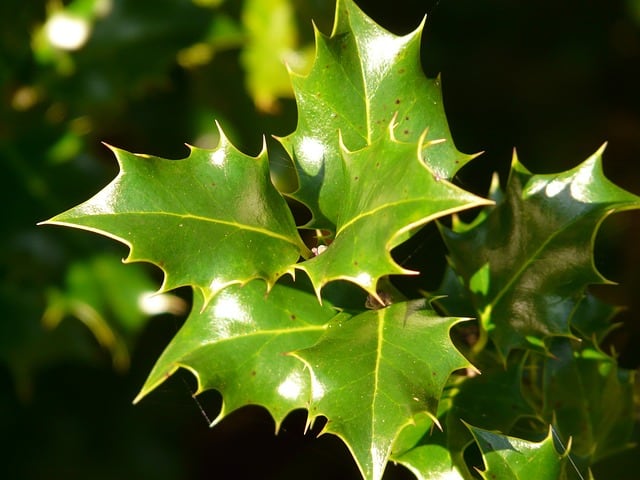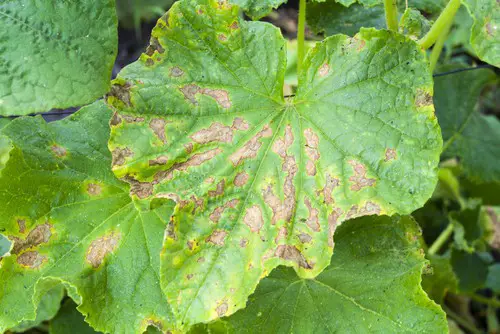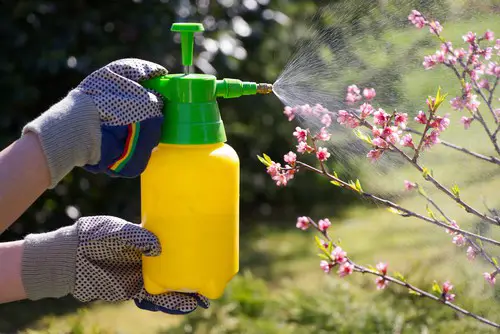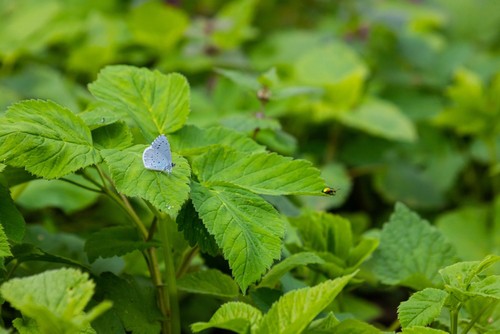Brown spots on holly leaves are a common problem for many gardeners. These unsightly spots can detract from the beauty of the holly plant and may even indicate a more serious problem. Understanding the causes, symptoms, and treatment of brown spots on holly leaves is essential for maintaining healthy holly plants.
There are several factors that can cause brown spots on holly leaves. Fungal diseases, such as holly leaf spot or holly tar spot, are a common culprit. Weather damage, such as a sudden cold snap or prolonged dry period, can also cause brown spots on the leaves.
Poor growing conditions, such as too much or too little water, can also contribute to the problem. Identifying the cause of the brown spots is the first step in treating and preventing the problem from reoccurring.
Key Takeaways
- Brown spots on holly leaves can be caused by fungal diseases, weather damage, or poor growing conditions.
- Identifying the cause of the brown spots is essential for effective treatment and prevention.
- Proper maintenance, including regular watering and pruning, can help prevent brown spots on holly leaves.
Other popular posts:
- Brown Spots on Grape Vine Leaves
- Brown Spots on Fan Leaves During Veg
- Brown Spots on Eggplant Leaves
Understanding Brown Spots on Holly Leaves

Holly plants are popular for their attractive foliage, but when brown spots start to appear on their leaves, it can be a cause for concern. Brown spots on holly leaves are a common problem that can be caused by several factors, including fungal infections, insect infestations, environmental stress, and improper care.
Fungal infections are the most common cause of brown spots on holly leaves. There are several types of fungi that can infect holly plants, including Coniothyrium ilicinum and Phacidium species.
These fungi can cause small to large irregularly shaped yellow-brown spots on the leaves. As the infection progresses, the leaves may turn brown and fall off the plant.
Insect infestations can also cause brown spots on holly leaves. Spider mites, scale insects, and whiteflies are common pests that can damage holly leaves and cause brown spots to appear. These insects feed on the sap of the plant, which can cause the leaves to turn brown and fall off.
Environmental stress can also cause brown spots on holly leaves. Drought, excessive heat, and cold temperatures can all cause holly leaves to turn brown and fall off.
In addition, holly plants that are grown in poorly drained soil or in areas with high humidity are more susceptible to fungal infections, which can cause brown spots to appear on the leaves.
Proper care is essential for preventing brown spots on holly leaves. Holly plants should be planted in well-drained soil and should be watered regularly during dry periods. In addition, holly plants should be pruned regularly to remove dead or diseased branches, which can help prevent fungal infections.
Brown Spots on Holly Leaves – 3 Common Problems
Holly bushes are a popular landscaping plant due to their evergreen foliage and bright red berries. However, brown spots on holly leaves can be a sign of a problem. There are several potential causes of brown spots on holly leaves, including fungal diseases, insect infestations, and environmental factors.
1. Fungal Diseases

Fungal diseases are a common cause of brown spots on holly leaves. Holly leaf spot and holly tar spot are two common fungal diseases that can cause brown spots on holly leaves.
Holly leaf spot is caused by several types of fungi, including Phacidium curtisii, Coniothyrium ilicinum, and Phytophthora ilicis. This disease typically causes small brown spots on the leaves, which can eventually merge into larger areas of dead tissue.
Holly tar spot is caused by the fungus Rhytisma curtisii and typically causes larger, irregular brown spots on the leaves.
Fungicides can be used to control fungal diseases on holly bushes. However, it is important to identify the specific fungal disease before applying any fungicides, as different types of fungi require different treatments.
2. Insect Infestations
Insect infestations can also cause brown spots on holly leaves. Nematodes, including Meloidogyne and Tylenchorhynchus species, can cause brown spots on holly leaves by feeding on the roots of the plant. Insects such as scale insects and whiteflies can also cause brown spots on holly leaves by sucking the sap from the plant.
Insecticides can be used to control insect infestations on holly bushes. However, it is important to identify the specific insect pest before applying any insecticides, as different types of insects require different treatments.
3. Environmental Factors
Environmental factors can also cause brown spots on holly leaves. Leaf scorch, which is caused by hot, dry weather, can cause brown spots on holly leaves by drying out the leaves. Winter damage, which is caused by cold, dry weather, can also cause brown spots on holly leaves by damaging the leaves.
To prevent environmental factors from causing brown spots on holly leaves, it is important to ensure that the holly bushes are properly watered and fertilized. Mulching around the base of the plant can also help to retain moisture in the soil and protect the roots from extreme temperatures.
Identifying Symptoms of Brown Spots on Holly Leaves

Brown spots on holly leaves can indicate several diseases caused by fungi or bacteria. These spots can vary in size and shape, and may have different colors depending on the disease. It’s important to identify the symptoms of brown spots on holly leaves early on to prevent the spread of the disease to other plants.
Symptoms of brown spots on holly leaves can include:
- Yellow spots: Some diseases cause yellow spots to appear on the leaves before they turn brown. These spots may be circular or irregular in shape and can vary in size.
- Black spots: Other diseases cause black spots to appear on the leaves. These spots may have a yellow or brown halo around them, and can also vary in size and shape.
- New growth: Diseases that affect new growth can cause it to be stunted or deformed. The leaves may be smaller than normal, or have an unusual shape.
- Stunting: Some diseases can cause the entire plant to be stunted, with small leaves and a slow growth rate.
- Defoliation: Severe cases of brown spots on holly leaves can cause the leaves to fall off the plant prematurely. This can weaken the plant and make it more susceptible to other diseases.
- Twig dieback: If the disease spreads to the twigs, they may start to die back. This can cause the plant to become misshapen or even kill it.
It’s important to note that not all brown spots on holly leaves are caused by diseases. Environmental factors such as drought, frost damage, or sunburn can also cause brown spots. However, if the spots are accompanied by other symptoms such as yellowing, stunting, or defoliation, it’s likely that a disease is the cause.
To identify the specific disease causing the brown spots on holly leaves, it’s best to consult with a professional or send a sample to a plant diagnostic lab. This will ensure that the correct treatment is applied to the plant to prevent further damage.
Treatment of Brown Spots on Holly Leaves
Holly bushes are a popular landscaping choice due to their attractive foliage and berries. However, brown spots on holly leaves can be a sign of a fungal infection that can quickly spread and cause significant damage. Fortunately, there are several treatment options available to combat this issue.
Chemical Treatment

One option for treating brown spots on holly leaves is to use a fungicide. Fungicides are chemicals that kill or inhibit the growth of fungi and can be effective at stopping the spread of the infection. However, it is important to note that fungicides are not a cure and should be used in conjunction with other treatments.
When using fungicides, it is essential to follow the manufacturer’s instructions carefully. Some fungicides may require multiple applications, and it is essential to apply them at the right time of year for maximum effectiveness. It is also important to wear protective clothing and follow safety precautions when handling fungicides.
Natural Treatment
Another option for treating brown spots on holly leaves is to use natural remedies. Natural treatments are often less toxic than chemical treatments and can be just as effective. Some natural treatments for fungal infections include:
- Pruning: Removing infected leaves and branches can help stop the spread of the infection.
- Neem oil: Neem oil is a natural fungicide that can be effective at treating fungal infections.
- Baking soda: Baking soda can be mixed with water and applied to infected leaves to help kill the fungus.
It is important to note that natural treatments may take longer to be effective than chemical treatments. Additionally, not all natural treatments are safe for all types of plants, so it is essential to do research and consult with a professional before using any natural remedies.
Prevention of Brown Spots on Holly Leaves
Holly bushes are an attractive addition to any garden, but they are susceptible to brown spots on their leaves. These spots can be caused by a variety of factors, including fungal diseases and insect infestations. Fortunately, there are several steps that can be taken to prevent brown spots from developing on holly leaves.
1. Proper Planting and Spacing
One of the most important steps in preventing brown spots on holly leaves is to ensure that the bushes are planted and spaced correctly. Holly bushes should be planted in well-draining soil that is rich in organic matter.
Proper spacing is also important, as it allows for good air circulation around the bushes. A general rule of thumb is to space holly bushes at least 3 feet apart.
2. Adequate Watering

Holly bushes require regular watering to stay healthy, but over-watering can lead to fungal diseases that cause brown spots on the leaves. It is important to water holly bushes deeply and infrequently, allowing the soil to dry out slightly between watering sessions.
Watering in the morning is recommended, as it allows the leaves to dry out during the day, preventing the growth of fungal spores.
3. Regular Pruning
Regular pruning is essential for maintaining the health and appearance of holly bushes. Pruning helps to promote good air circulation and sunlight penetration, both of which are important for preventing fungal diseases.
Dead, damaged, or diseased branches should be removed promptly, as they can harbor fungal spores and insect pests.
Maintaining Healthy Holly Plants
Holly plants are a popular choice for gardeners looking to add evergreen shrubs or trees to their landscape. However, brown spots on holly leaves can be a common issue that affects the plant’s appearance and vigor.
To maintain healthy holly plants, gardeners should pay attention to the plant’s root system and provide proper care to the root zone.
One crucial aspect of maintaining healthy holly plants is ensuring that the root system is healthy. The root system is responsible for absorbing nutrients and water from the soil, which is essential for the plant’s growth and vigor.
Gardeners should ensure that the holly bush’s root system is not damaged by overwatering, poor drainage, or compacted soil. They can use organic mulch to improve soil quality and provide nutrients to the root system.
Another critical factor in maintaining healthy holly plants is providing proper care to the root zone. Gardeners should ensure that the holly bush’s root zone is well-watered and adequately fertilized.
They should also avoid planting holly plants in areas with poor drainage or where water accumulates. Gardeners should also ensure that the holly plant receives enough sunlight to aid photosynthesis.
Additionally, gardeners should pay attention to the overall plant vigor of their holly plants. If the holly plant is not thriving, it may be due to disease or pests. Gardeners should inspect their holly plants regularly for signs of disease or pests and take appropriate measures to control them.
Overall, maintaining healthy holly plants requires proper care of the plant’s root system and root zone. Gardeners should also pay attention to the plant’s overall vigor and take appropriate measures to control disease and pests. With proper care and attention, holly plants can thrive and provide a beautiful addition to any landscape.
Common Diseases in Holly
Holly is a popular evergreen shrub that is commonly grown for its attractive foliage and berries. However, holly plants are prone to several diseases that can cause brown spots on leaves, defoliation, and even death. In this section, we will discuss some of the most common diseases that affect holly plants.
1. Leaf Spot Diseases

Leaf spot diseases are caused by various fungi and bacteria that infect the leaves of holly plants. Symptoms of leaf spot diseases include brown spots on leaves, premature leaf drop, and defoliation. The most common leaf spot diseases that affect holly plants are:
- Tar spot: This disease is caused by the fungus Macroderma curtisii, and it causes yellow spots on the leaves of American and English hollies in May. These spots turn reddish-brown and finally black by fall.
- Holly leaf spot: This disease is caused by the fungus Coniothyrium ilicinum, and it causes small to large irregularly shaped yellow-brown spots on old American holly leaves during winter and spring. Heavily infected leaves drop prematurely from the trees in the spring.
2. Phytophthora Root Rot
Phytophthora root rot is a serious disease that affects many plants, including holly. It is caused by the fungus-like organism Phytophthora cinnamomi, which attacks the roots of holly plants.
Symptoms of phytophthora root rot include yellowing and wilting of leaves, stunted growth, and brown spots on leaves. The disease is most common in poorly drained soils, and it can be difficult to control once it has infected a plant.
3. Stunt
Stunt is a viral disease that affects holly plants. It is transmitted by insects, such as aphids and leafhoppers, and it causes stunted growth, yellowing of leaves, and brown spots on leaves. There is no cure for stunt, so infected plants should be removed and destroyed to prevent the disease from spreading to other plants.
Disposal of Infected Holly Leaves
When dealing with infected holly leaves, it is important to dispose of them properly to prevent the spread of disease. Fallen leaves are one of the primary sources of fungal spores that can infect other plants, so it is important to remove them promptly.
One option for disposing of infected holly leaves is to burn them. This method is effective at killing the fungal spores and preventing their spread. However, burning leaves can be dangerous and is not always permitted in residential areas. Check with local authorities to determine if burning is allowed in your area.
Another option is to dispose of the leaves in the trash. Bag the infected leaves and place them in the trash bin, making sure to seal the bag tightly. This will prevent the spores from escaping and infecting other plants.
Composting infected holly leaves is not recommended, as the composting process may not kill the fungal spores. If you do choose to compost infected leaves, make sure to use a hot composting method that reaches a temperature of at least 140°F (60°C) for several days to ensure that the spores are killed.
It is also important to clean up any fallen leaves around the base of the holly tree. Rake them up and dispose of them properly to prevent the spread of disease. Regularly cleaning up fallen leaves can help prevent the buildup of fungal spores and reduce the risk of infection.
Overall, proper disposal of infected holly leaves is essential for preventing the spread of disease. Whether you choose to burn them, dispose of them in the trash, or compost them using a hot composting method, make sure to take the necessary precautions to protect your other plants from infection.
Frequently Asked Questions
How do you treat holly leaf blight?
Holly leaf blight can be treated by removing infected leaves and pruning affected branches. Proper sanitation practices, such as disposing of infected plant material, can also help prevent the spread of the disease. In severe cases, fungicides may be necessary.
What are some effective fungicides for holly leaf spot?
Fungicides containing chlorothalonil or myclobutanil have been found to be effective against holly leaf spot. It is important to carefully follow the instructions on the label when applying fungicides.
What is athe white fungus on holly bushes?
The white fungus on holly bushes is likely powdery mildew, a fungal disease that can cause white or grayish-white patches on leaves, stems, and flowers. It can be treated with fungicides or by removing infected plant material.
What causes black leaf on holly bushes?
Black leaf on holly bushes is often caused by a fungal disease known as holly leaf spot or holly tar spot. It can be treated by removing infected leaves and pruning affected branches. Fungicides may also be necessary in severe cases.
What are the dark spots on holly leaves?
Dark spots on holly leaves are a common symptom of holly leaf spot. The spots can be black, brown, or yellow and may cause leaves to drop prematurely. Proper sanitation practices and fungicides can help prevent and treat the disease.
What does holly leaf blight look like?
Holly leaf blight can cause black or brown spots on leaves, often with a yellow halo around them. The spots may merge together and cause leaves to drop prematurely. Infected leaves may also have a slimy or greasy appearance.

Hey, I’m Lisa and I’ve been an avid gardener for over 30 years. I love writing, talking and living in the garden! Feel free to connect with me on my socials below

